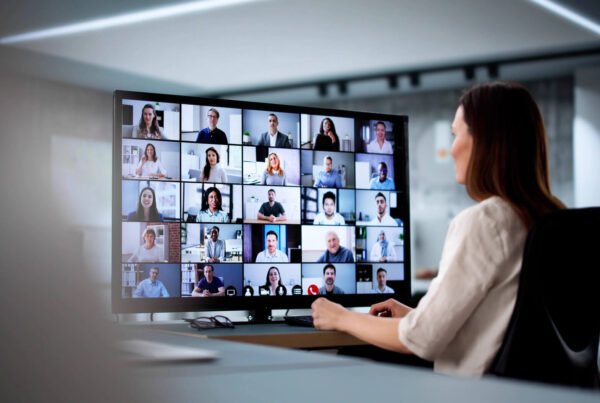Last Updated on June 15, 2023 by Dave Schoenbeck

We all have significant preferences that we don’t consciously see or understand. Although we don’t intend it, these cognitive biases significantly impact our decisions. Because most leaders are very confident people, we tend to underestimate or ignore these biases’ power in our lives. This can be incredibly detrimental to our decision-making processes.
Bias in decision-making is a widespread problem, but once we become aware of it, we can work to overcome it. Here’s what you need to know about common biases and errors in decision-making.
What Is Cognitive Bias?
Simply put, a cognitive bias is an error in your way of thinking that affects how you make decisions. We’re often unaware of these biases; they can strike when we feel most confident in our ability to decide fairly, which is why cognitive bias is sometimes called “decision bias.”
According to some theorists, more than one hundred types of cognitive biases have been identified. There may be many types of biases in decision-making that leaders should be aware of, but here are seven that are crucial to know.
1. Framing Bias
As the name suggests, this bias has to do with how a decision is framed. Regardless of the actual data, people tend to make decisions based on whether a particular option is presented to us as being positive or negative.
One example of this would be reviewing year-end data. If the data is juxtaposed with last year’s lower numbers, the year will look like a great success. However, if this same data is compared with projections that you did not meet, the year will look much less profitable. Don’t be fooled by how the data is presented: focus on the numbers.
2. Overconfidence Bias
Overconfidence bias is much like it sounds: people tend to be much more confident about their decision-making ability than they should be. This is especially a problem among business leaders, who tend to be a confident lot.
The best way to adjust for overconfidence bias is to acknowledge that you humbly don’t have all the answers. Keep an open mind and recognize that you might be wrong. While confidence is a critical trait in a leader, hubris is much less becoming.
3. Confirmation Bias
Humans tend not to want to change their existing beliefs. Confirmation bias causes us to ignore evidence that goes against our current beliefs subconsciously. For example, if we have a problem employee, we might automatically fixate on what they do wrong because it confirms our view that this employee is a poor performer.
On the other hand, if we have a star employee, we’re much more likely to overlook their mistakes because they go against what we want to believe. Many people choose their news outlet outside the workplace based on whether it supports their current political beliefs or attends a church that aligns most correctly with their worldview.
It’s important to remain objective and evaluate all evidence case-by-case to make the best decisions.
4. Randomness Bias
Randomness bias is our tendency to notice patterns in random data that don’t exist. The most common example of this is seen in gamblers, who make bets based on such patterns or superstitions when the odds are truly random. Don’t try to reach for evidence that isn’t there. Allow for the possibility of random data, even when it’s not convenient for your bottom line.
5. Availability Bias
Availability bias is the tendency for our minds to look for the most readily available evidence to back up our decision-making. It’s a great tactic to compare your situation to similar examples to make the best choice. However, availability bias is far from objective.
Regarding availability bias, your mind focuses on the evidence that stands out most. Unfortunately, it’s outliers that tend to be more memorable than averages. When deciding, be sure you’re basing your choice on concrete numbers, not just the ones you can remember most quickly.
6. Anchoring Bias
Anchoring bias is our tendency to place undue weight on the first piece of information we see. For example, suppose you’re buying a new car, and the first one you look at is incredibly expensive. In that case, the vehicles you see after that will seem reasonable and affordable in comparison, regardless of whether they are fairly priced.
7. Hindsight Bias
We’ve all heard the phrase “hindsight is 20/20.” Hindsight bias is a phenomenon that makes us think a past event was, in hindsight, more predictable than it actually may have been. This can lead to us being too hard on ourselves for not predicting outcomes that could not have been foreseen simply because they seem obvious to us now in the present.
How to Overcome Cognitive Bias
In a way, cognitive bias is our brain’s way of streamlining decision-making. We can make a logical, confident decision by eliminating evidence that doesn’t seem to apply and drawing connections between the patterns we observe.
However, we can’t fall victim to cognitive bias. These errors in the thought process prevent us from accurately judging data and making decisions fairly and objectively.
The best way to overcome cognitive bias is to take your time with decision-making. Consider all evidence and examine your first instinct to see if there might be some hidden influences that affect your perception of the situation. You’ll find that accepting the existence of cognitive bias is the first step to overcoming it.
Decision-making biases and errors in management are closely related. If you allow cognitive bias to dictate how you make decisions, you will make mistakes. Fortunately, these errors can be significantly reduced with some awareness and practice.
If you’re concerned about how cognitive bias manifests in your leadership style, a business coach can help. Please fill out my contact form and schedule a complimentary video coaching session to discuss cognitive biases in decision-making.
Coach Dave
- Agonizing Reasons Why We Procrastinate and What You Should Do About It - December 18, 2025
- The Cheat Code for How to Build an Effective Winning Team - December 11, 2025
- A Practical Guide on How to Create a Business Strategy That Works - December 4, 2025


